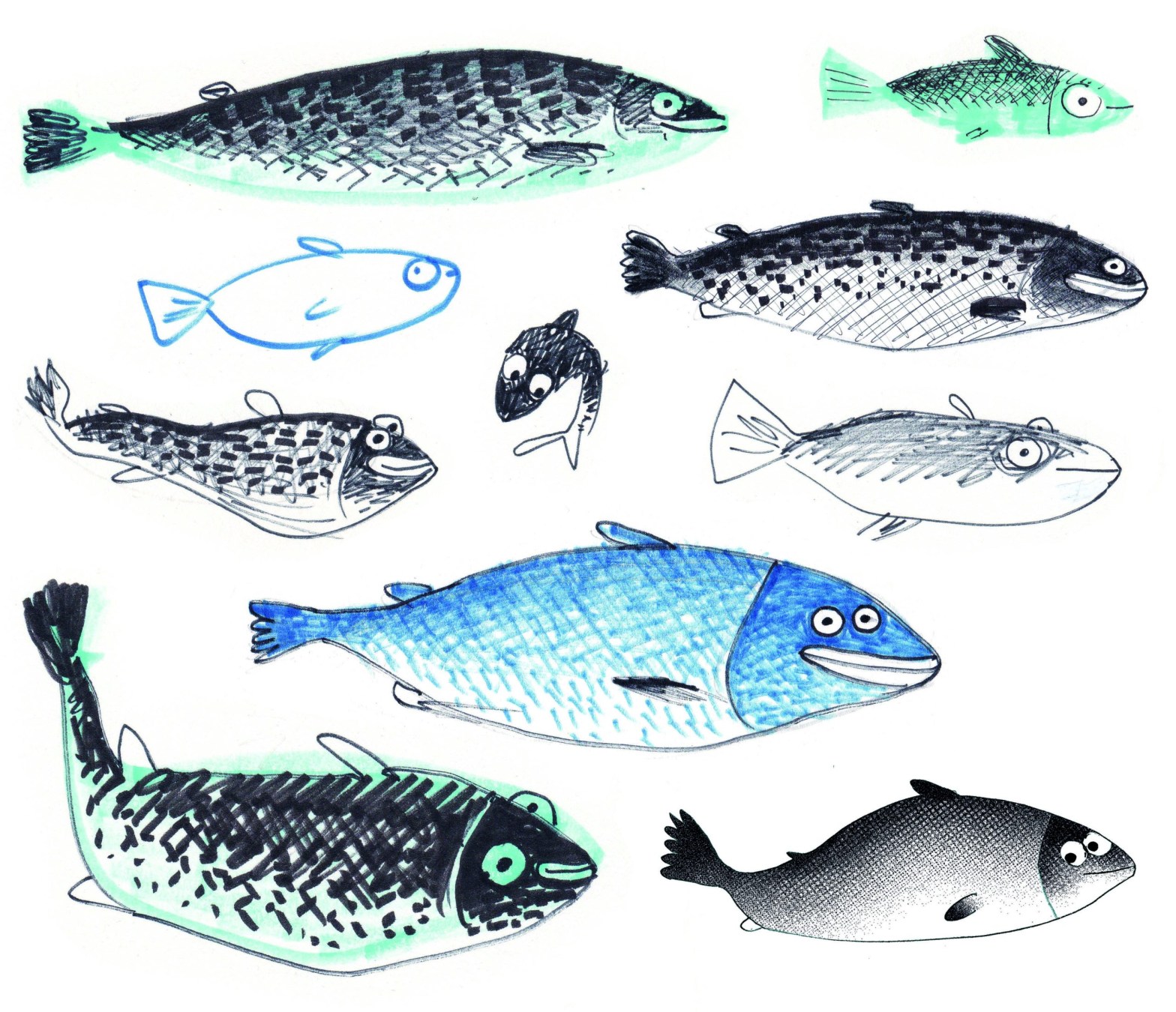What is long, narrow and folds open from the top? It is ROSA: The Very Brave Salmon, a new book by Klaas Verplancke, in which a wild pink fish braves wild, rushing brooks, and is to be expected to start spawning. But also, in her existential quest, ROSA travels any way possible using human means, such as fire hose, child’s tears and watering can to reach her destination. All this so she can, at the end (and this is not a spoiler: she will die a salmon’s ritual death). Verplancke’s tale is one of endurance, courage, and the power of behavior in nature. Klaas offers more on his fishy tale below.
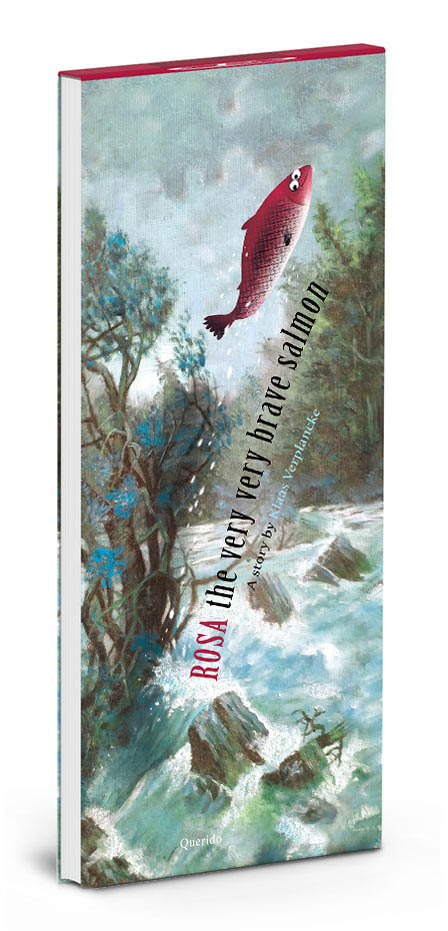
Why a book about a salmon?
My stories always arise from an intriguing visual idea that I use as a starting point for a philosophical or poetic story with social and human relevance, for a wide audience. This time was no different: the story of ROSA originated initially from the image of a salmon swimming up a stream of tears.
My illustrations are almost systematically meaningful juxtapositions. Salmon only swim up rivers. Exchanging the river for a spouting fire hose or a waterfall of sweat drops is not only visually funny and intriguing, but it is also a conflict that triggers my mind. After all, creativity emerges only from friction.
So, ROSA is not only a story about a salmon in an unusual situation but also a story about the broader meaning that arises from this unusual journey. This context is an inspiration for a picture book about being bold and courageous.
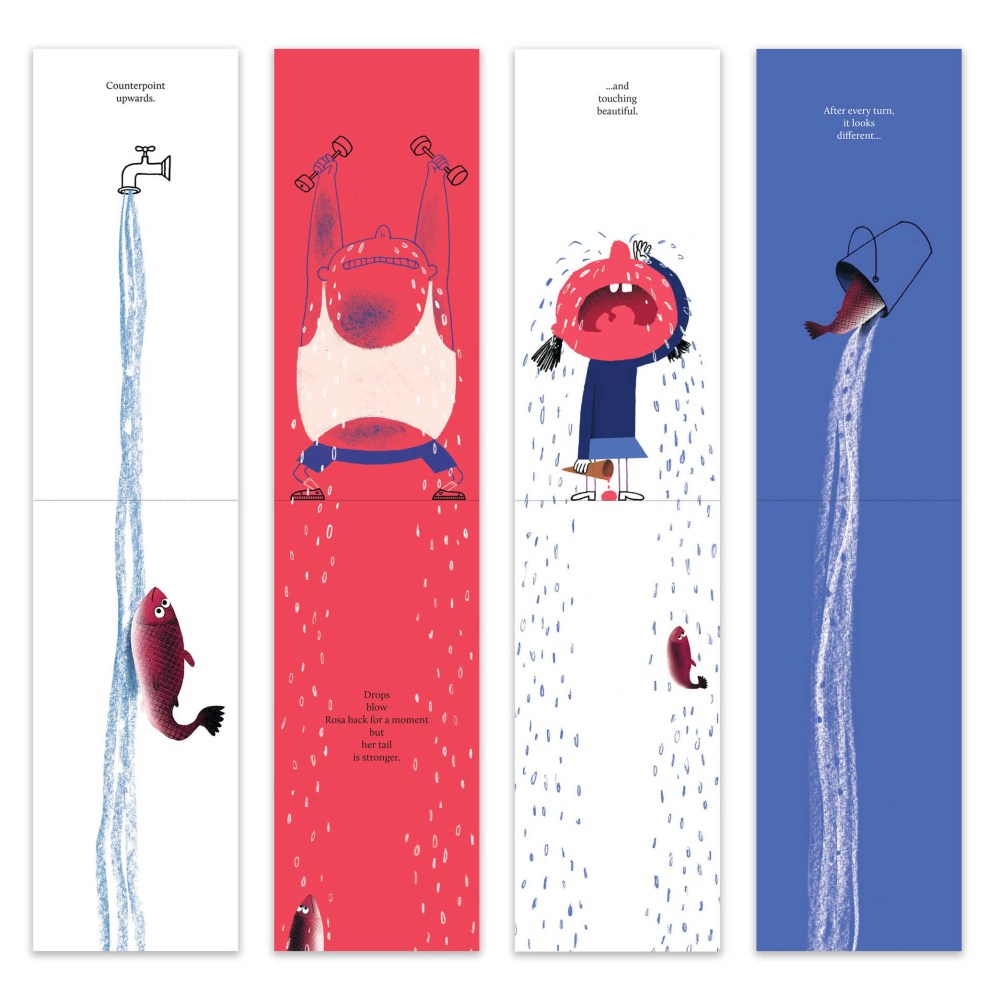
Have you become some kind of naturalist?
Regardless of the broader context around ROSA, I am particularly fascinated by salmon swimming against the current to spawn and eventually die. It is an astonishingly tragic story of the force of nature and unavoidable consequences of the instinctive urge. Climate change is the major threat of our time. The only solution lies in changing our way of life. The more we are willing to question all that we are used to, reversing the routines, if necessary, the better for our planet. The more ‘salmons’ and ‘ROSAs,’ the better for our future. In this sense, ROSA is a naturalistic story, yes.
The fragility of our existence was also present in my previous book The King’s Golden Beard. Anyone who denies the truth and imagines himself above the laws and forces of nature will sooner or later be presented with the bill. And if you look closely, you will notice the the penguins also suffer from climate change.
Vulnerability, however, does not mean hopelessness. As human beings, however insignificant, we are capable of finding solutions and offering hope as long as we are willing to break our thinking patterns by learning, listening, putting aside our prejudices, and facing our fears.
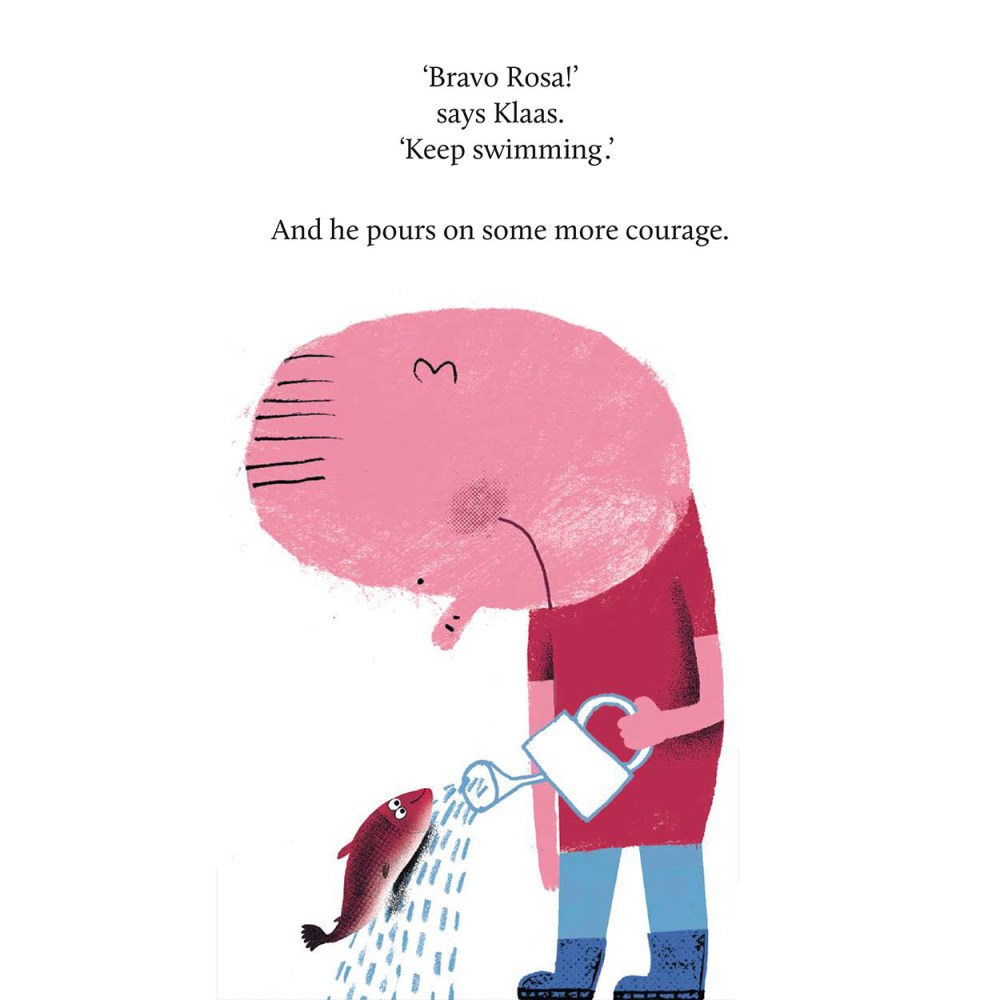
What is Rosa’s story? And what influenced Rosa’s strength?
ROSA is a story about tenacity, about leaving your comfort zone, jumping into the unknown, and going your way against the flow, an act of courage and guts in these times When people are caught in the stream of polarisation and algorithms. A meaningful wake-up call for young and old.
In a broader sense is ROSA is a story about dealing with the struggles and challenges of life. Rosa doesn’t swim in a river but through “currents” from human emotions and feelings.
Sadness, tension, effort, pleasure, trust, helpfulness, … A human life is never static. Every life course has highs and lows, curves and twists, slow moments, waterfalls and rapids. We speak of ‘a stream of consciousness’ for a reason, Water is a source of life, vital or at the same time deadly powerful as we see with climate change. Rivers are the lifeblood of cities, an indispensable link for our economy.
The motivation to cross our shadow is different for everyone. It can be hubris, or necessity, curiosity, impatience, … or a combination of these. Every reason is valid and should be regarded with the utmost respect and admiration. That’s why I don’t specify ROSA’s inner drive here.
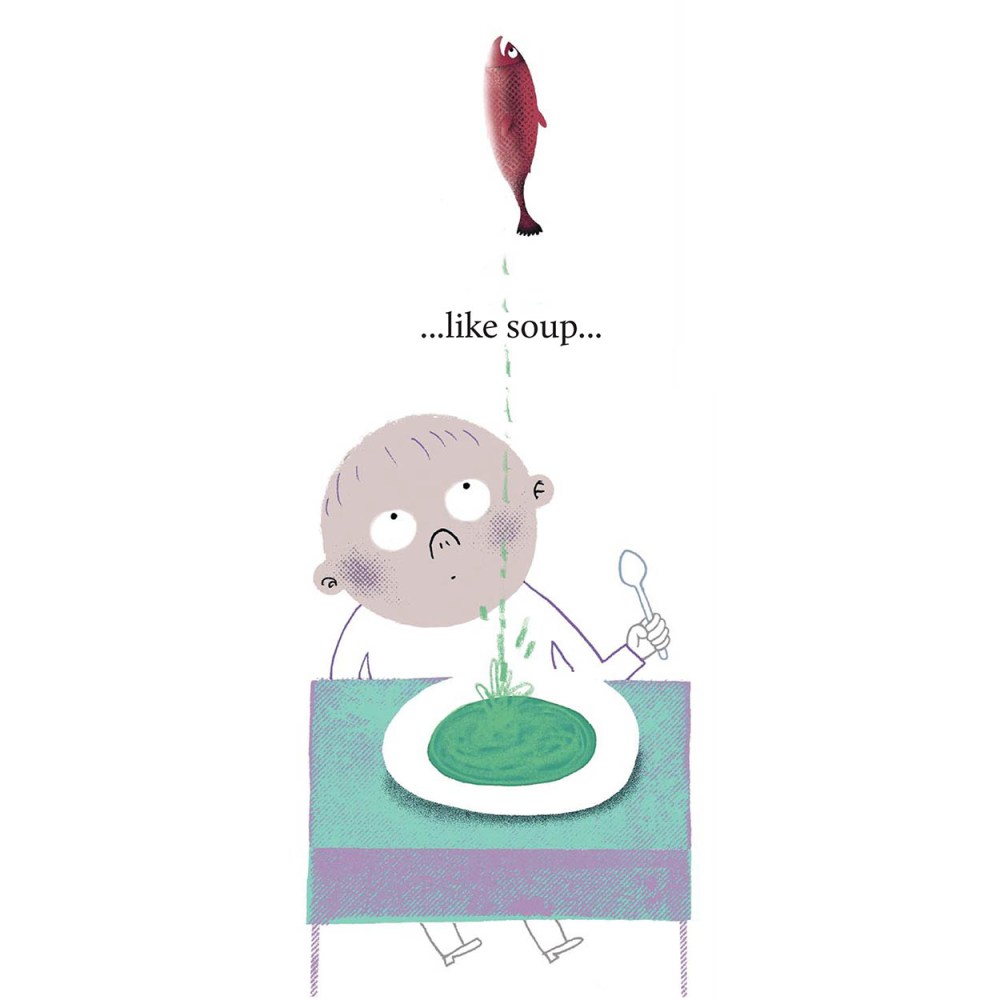
Your style is a bit more representational. Did you change?
I don’t feel like I’m making a sudden turnaround. I have always used recognizable and accessible images as a stylistic feature. They are easily accessible to viewers. Once the images acquire their attention, a slightly more complex story can begin that is created by the interaction between the visual elements.
The simple, daily setting in this story is essential. First and foremost to enhance the visual juxtaposition effect, but also to highlight the theme of daring. For what seems ordinary to us is extraordinary to a salmon. What is routine for some is a threshold to be overcome for others.
The first illustrations for this book were made 8 years ago. I was then in the phase where I was trying out new brushes, filters, and grains in Photoshop that you can still see in the images.
All these years after, I searched for a suitable publisher for this project. The singularity in content and form was a stumbling block. Many publishers work with rigid formats, and my whimsical spirit did not fit into that. When the project finally did start rolling toward publication, I went back to those original designs. I technically refined the original artworks and made them more homogenized in colors, textures, and lines.
The biggest difference from the original manuscript was that the salmon turned from an anonymous fish into Rosa, a character, with thoughts and feelings. This elaboration is where I ended up putting most of my energy. A fish’s body language is fairly limited. So it was quite a job to get enough movement and variation in ROSA’s movement and facial expressions. It helped me a lot to see a documentary about migrating animals, with the legendary Sir Richard Attenborough as the voice-over. I learned that salmon turn red when they start their final journey. That color inspired me for the naming, and it helped me to make Rosa stand out, even in a small size, in every picture.
I deliberately worked out and combined two styles. ROSA is worked out more plastically and detailed, like the painting she jumps in and out of, whereas the illustrations through which she swims are digitally evenly colored and drawn a little more loosely.
The intent of this was to create a kind of alienation from ROSA’s point of view. All in all, it is an adventure, and I wanted to reinforce just that aspect by making a stylistic difference as if she is diving into a new world to be discovered when she jumps out of the painting.
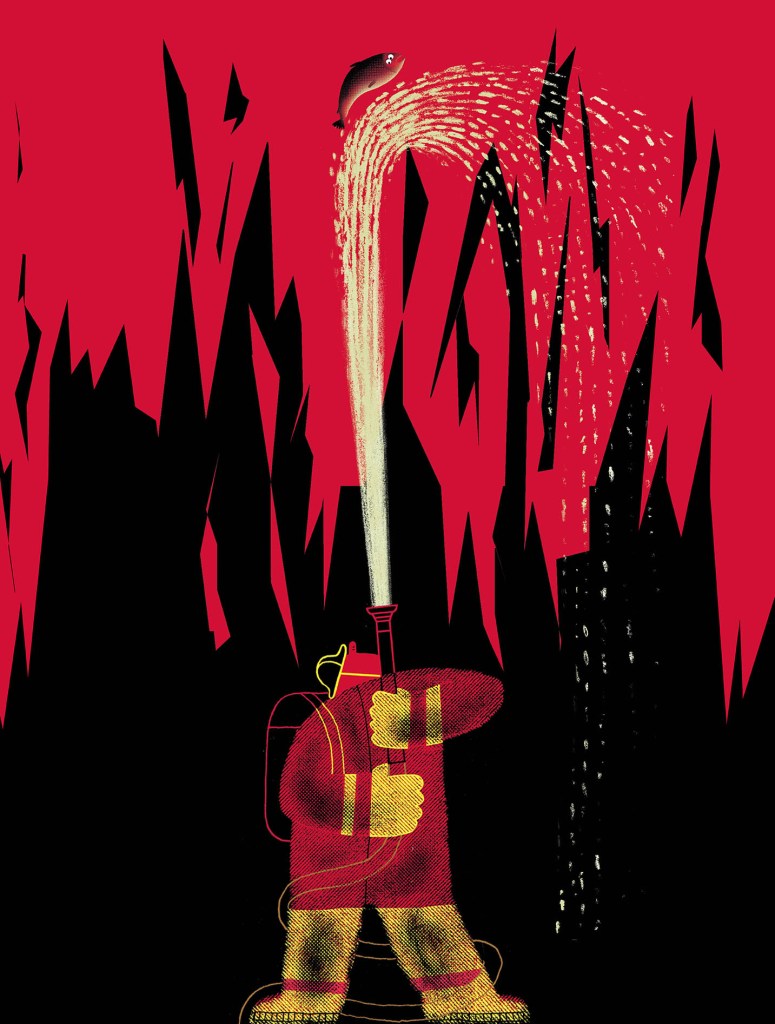
I cannot ignore the shape and size of the book. Tell me how this came to be?
The painting [on the cover] plays a crucial role in this book. When I saw it with friends who had bought it at a flea market, I knew immediately that it was the key to my idea. Therefore, it plays a central role in this story. It is a work from 1920, but I have not yet been able to find out the painter. This is the original:
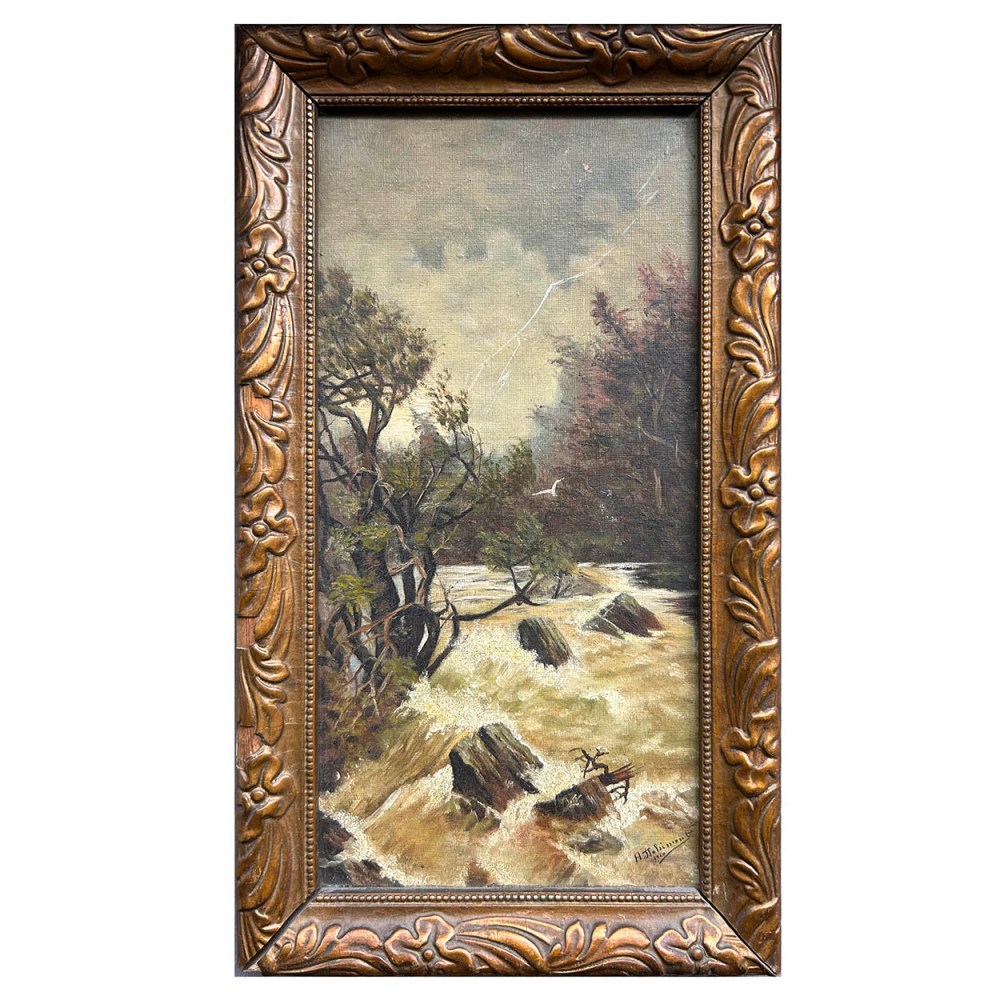
I saw the somewhat kitschy naturalism as an engaging counterpoint to a sketchy illustration style and digital coloring, the swirling river became ROSAs home, and the elongated shape was the perfect match for my idea regarding the specific design of the book. Right from the start, I knew I wanted to create a very long format, tall book where you have to flip the pages up on the short side, almost literally making ROSA swim up against the current (and gravity).
The book and the reader become an active part of the story. Which I already did in my previous picture book, The King’s Golden Beard, where, at one point, you literally have to flip the book over to follow the story.
In the future, I want to explore further how I can further align form, interaction and content.
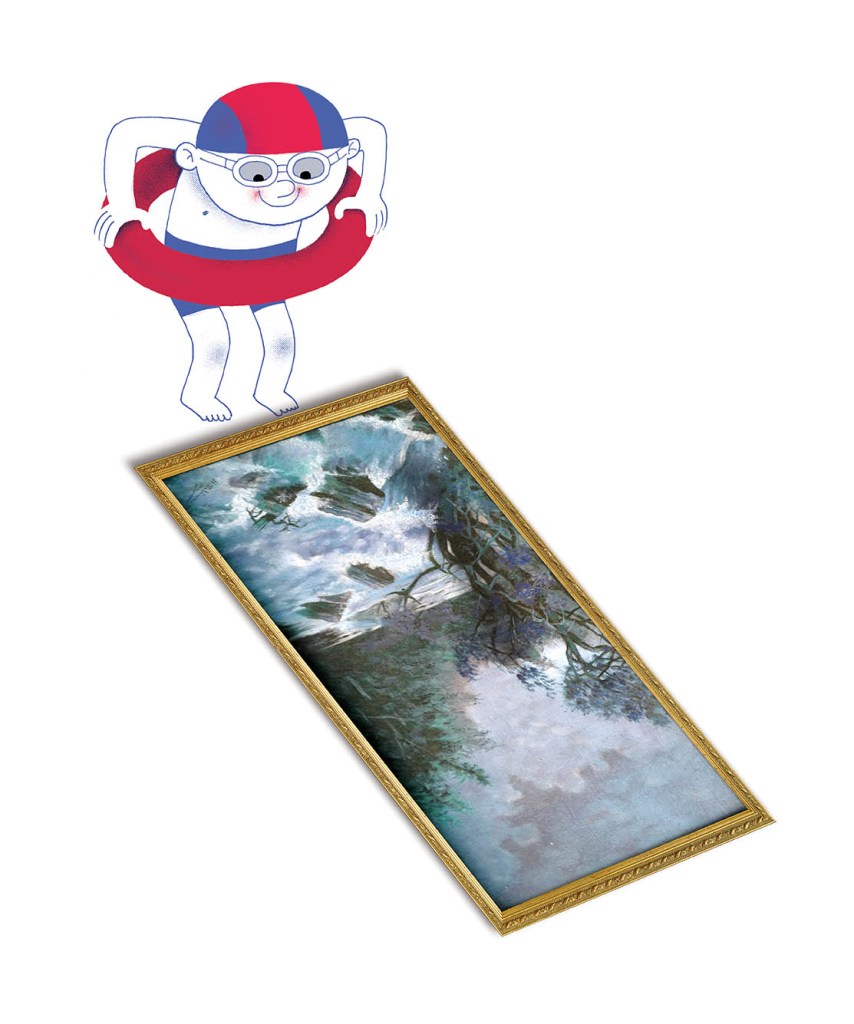
Do you eat salmon? Especially wild salmon? After this book can you ever eat salmon again?
Haha, good question. I never considered that before. But listen, I drew hundreds of pizzas and ice creams and I still eat them. And I take extra good care of that goldfish in my pond.
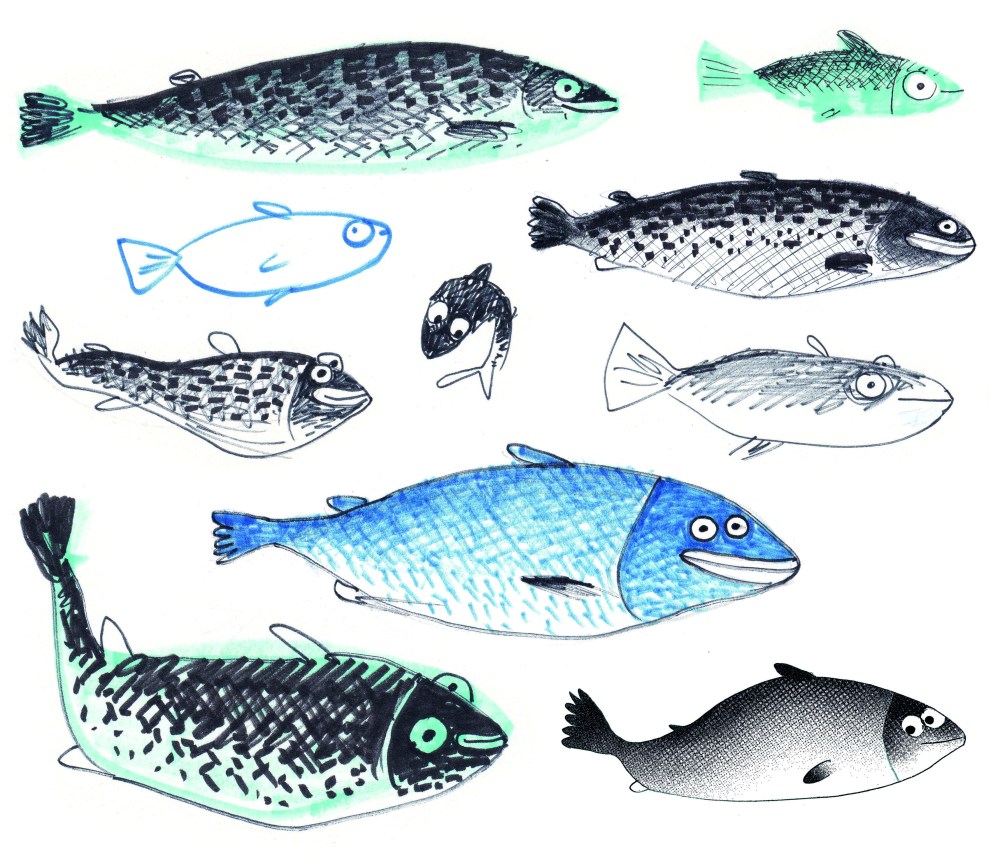
Do you have any other books about nature or natural things in the works?
One could say that The King’s Golden Beard is a picture book about the nature of things, and especially about those who ignore and disrespect it. The second book I wrote (Wortels/Roots, published in 2005) was about the friendship between a tree and a lonely man on a hill. And the wind, the rain, the sun and the moon play a crucial in many of my other writings.
But, in the end, it’s always about human nature.
